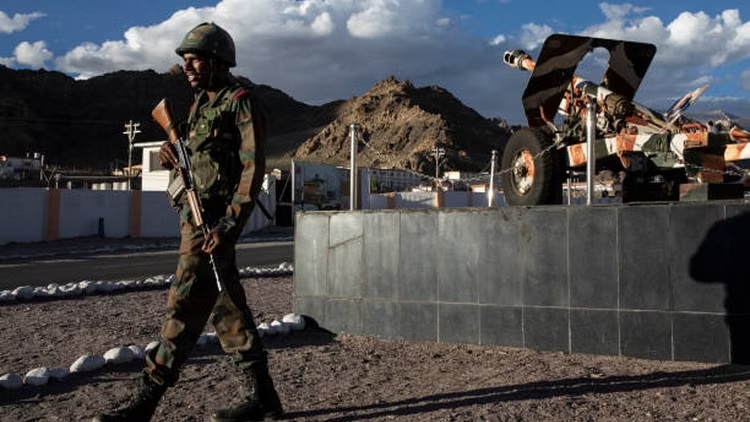India has lost access to 26 out of 65 Patrolling Points (PP) in eastern Ladakh, according to a report submitted at last week’s annual police meet in Delhi, but the government is yet to comment on the issue. This development comes when amid the country's standoff with China at various points along the 3,500-km border region.
“Presently, there are 65 PPs starting from Karakoram pass to Chumur which are to be patrolled regularly by the ISFs (Indian Security Forces). Out of 65 PPs, our presence is lost in 26 PPs (i.e. PP no. 5-17, 24-32, 37, 51,52,62) due to restrictive or no patrolling by the ISFs. Later on, China, forces us to accept the fact that, as, such areas have not seen the presence of ISFs or civilians since long, the Chinese were present in these areas. This leads to a shift in the border under control of ISFs towards Indian side and a buffer zone is created in all such pockets which ultimately leads to loss of control over these areas by India. This tactic of PLA to grab land inch-by-inch is known as Salami Slicing,” stated the report.
These points were routinely patrolled before April-May 2020, which is when China started increasing troops close to the LAC in eastern Ladakh. Twenty Indian soldiers were killed in violent clashes with the PLA on June 15, 2020; at least four Chinese soldiers were also killed.
The report was filed at last week's annual conference of the country's top police officers in Delhi, which was attended by Prime Minister Narendra Modi, Union Home Minister Amit Shah and National Security Advisor Ajit Doval. However, paper did not come up for discussion at the annual Director General of Police (DGP) Conference organised by the Intelligence Bureau (IB) that was held from January 20-22.
This report was among the 15 research papers submitted by police officers across the country on the subject ‘Security Issues Pertaining to Unfenced Land Border’.The Hindu had reported on December 22, 2022 that there are at least 30 PPs in eastern Ladakh along Line of Actual Control (LAC) are not being patrolled any more by Indian troops.
“PLA has taken advantage of the buffer areas in the de-escalation talks by placing their best of cameras on the highest peaks and monitoring the movement of our forces... they object our movement even in the buffer zone, claiming it to be 'their' area of operation and then further ask us to move back to create more 'buffer' areas,” stated the report.
"During an interaction with one senior officer whose unit is based right on forward area, he shared that, if by retreating 400 metres back, we can buy peace with PLA for 4 years, then it's worth it," the report added.
The paper added that the Army has placed considerable restrictions on the movement of civilians and graziers near the forward areas on the Indian side. “Till September 2021, senior officers of district administration and security forces would easily patrol till Karakoram Pass (35 km from Daulat Beg Oldie) in the DBO sector, however, restrictions in the form of check posts were placed by the Indian Army since December 2021 at DBO itself to stop any such movement towards Karakoram Pass as PLA had installed cameras and they would immediately raise objections on the movement from Indian side if not informed beforehand.”
The report comes just over a month after India accused China of trying to "unilaterally change the status quo" on their de-facto border, known as the Line of Actual Control, when clashes left troops on both sides injured.
The clash in Arunachal Pradesh on December 9 was seen as the most serious face-off since the Galwan Valley clash in 2020. A series of military talks since then, have reportedly led to a careful pullback of troops on both sides since then.
{gallery}katrina{/gallery}
Kajal Agarwal



















